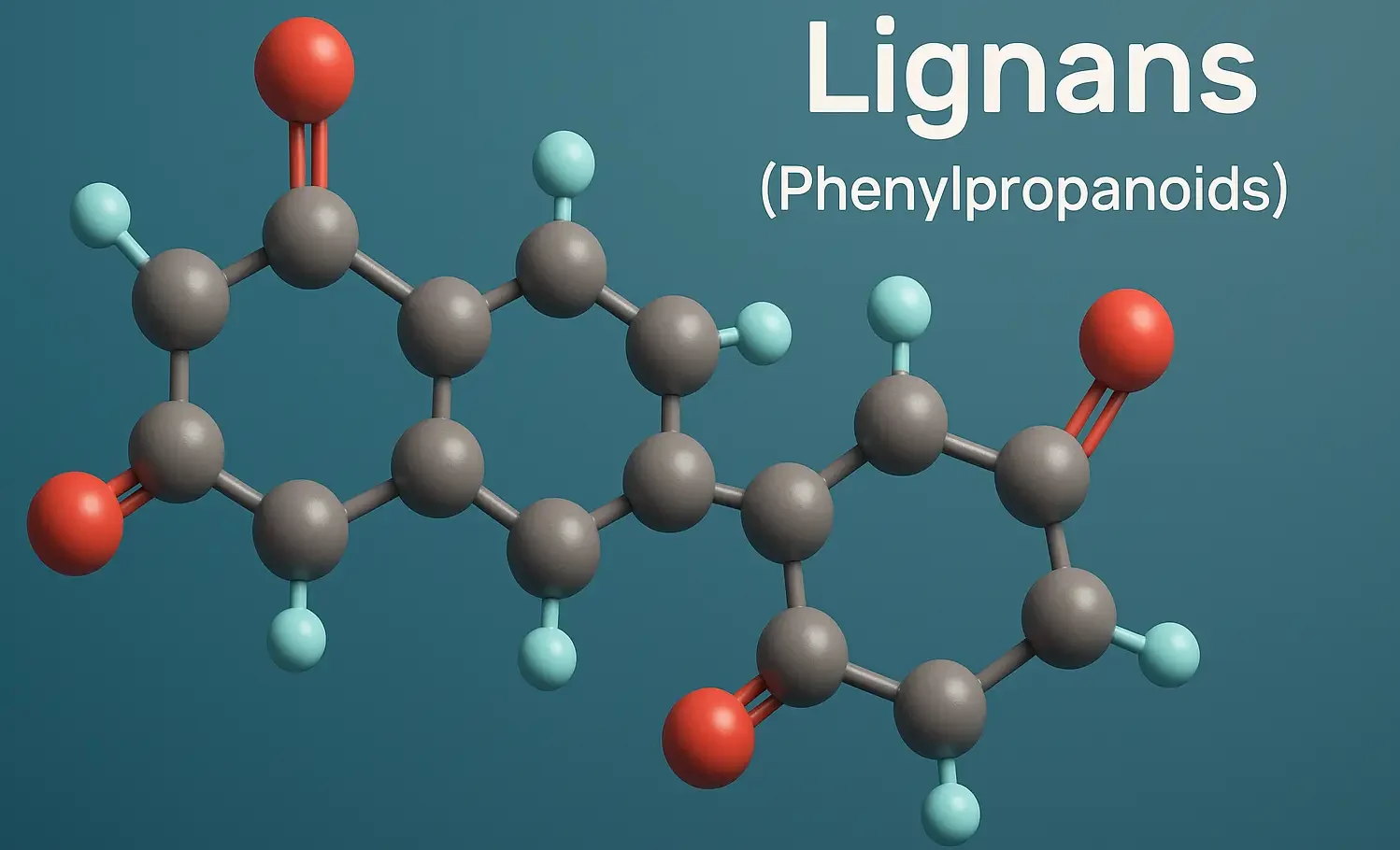Introduction to Lignans (Phenylpropanoids):
- Lignans (Phenylpropanoid) are dimers linked by β–β’ bonds, found in seeds, fruits, vegetables, and wood.
- Possess antioxidant, anticancer, and phytoestrogenic properties.
Synonyms of Lignans (Phenylpropanoids):
- Common name: Plant lignans
- Examples: Sesamin, Podophyllotoxin, Pinoresinol, Secoisolariciresinol
Biological Source:
- Found in Sesamum indicum (sesame seeds), Linum usitatissimum (flaxseeds), Podophyllum hexandrum (mayapple).
Family:
- Varies: Pedaliaceae, Linaceae, Berberidaceae.
Composition:
- Composed of two phenylpropanoid (C6-C3) units.
- Key lignans: Sesamin, Secoisolariciresinol, Podophyllotoxin, Enterolactone.
Chemistry:
- Class: Phenylpropanoids
- Structure: Dimers of cinnamyl alcohol derivatives (linked by β–β’, β–O–4, or β–5 bonds).
- Solubility: Lipophilic.
Therapeutic Uses:
- Antioxidant: Sesamin, Secoisolariciresinol combat free radicals.
- Anticancer: Podophyllotoxin aids in synthesizing drugs (etoposide, teniposide).
- Phytoestrogenic: Secoisolariciresinol, enterolactone help in hormone-related disorders.
- Hepatoprotective: Protects liver from oxidative damage.
Commercial Applications of Lignans (Phenylpropanoids)
- Anticancer drugs derived from podophyllotoxin.
- Nutritional supplements like flaxseed and sesame oil.
- Skin treatments: Podophyllotoxin for genital warts.
Click Here to Watch the Best Pharma Videos

